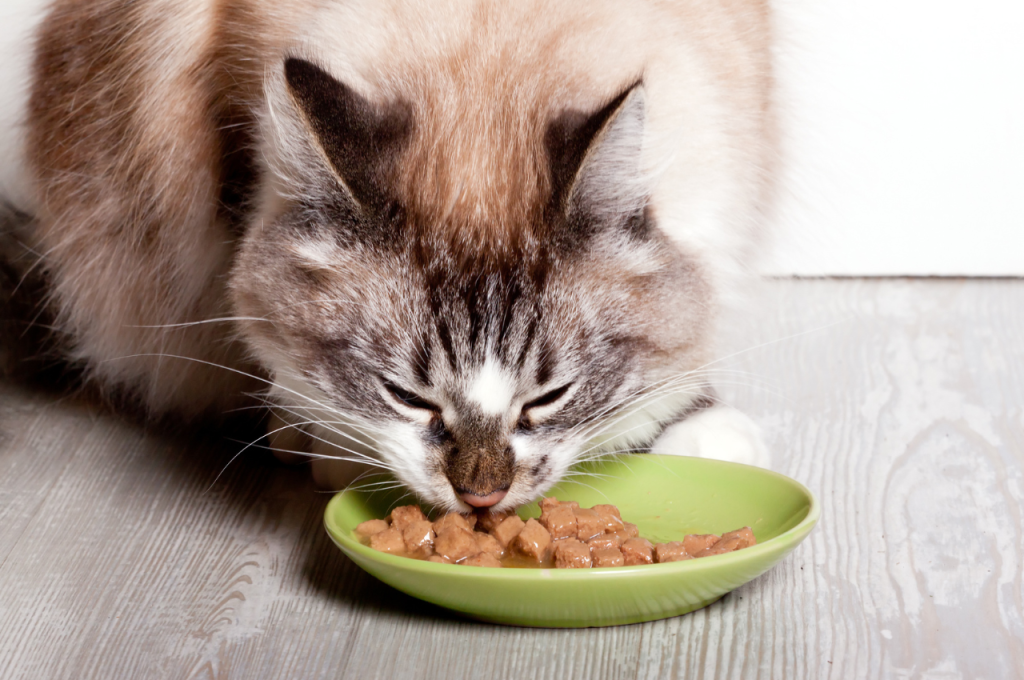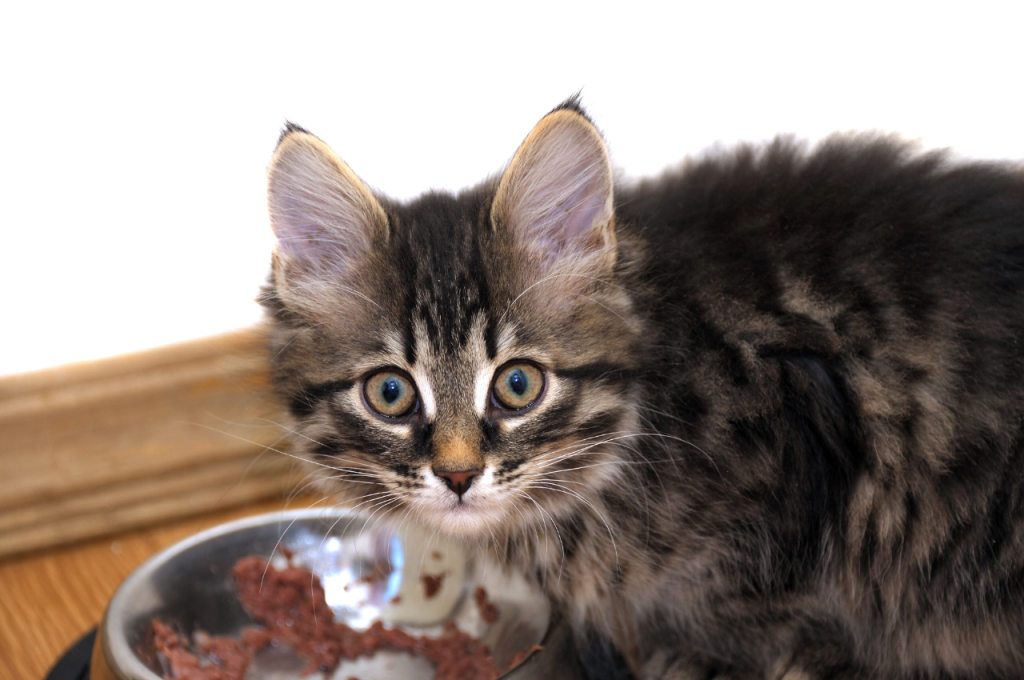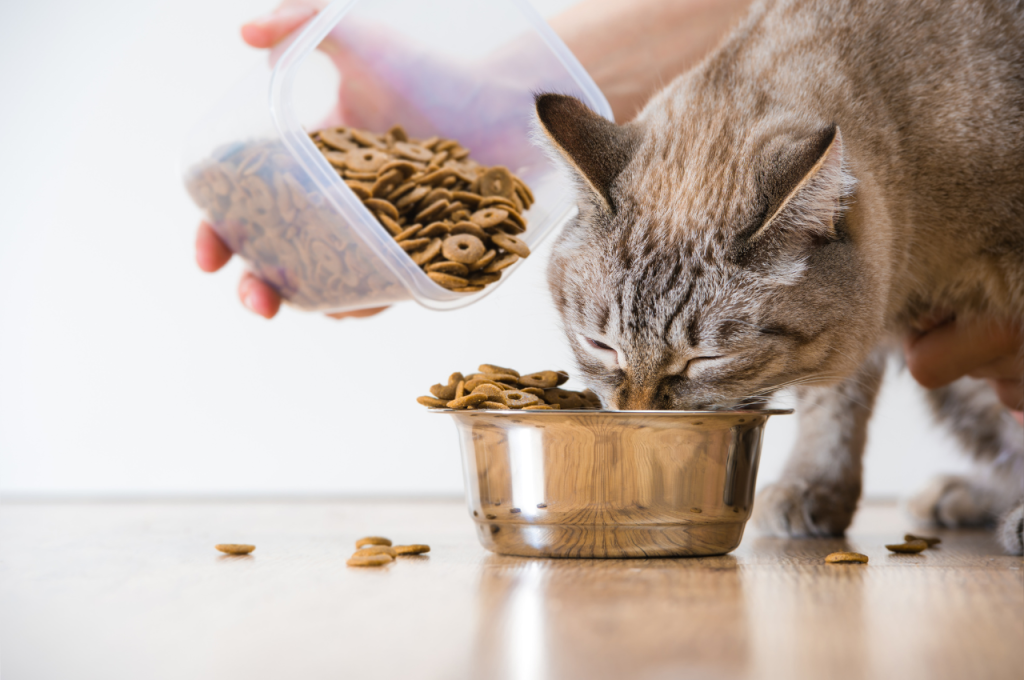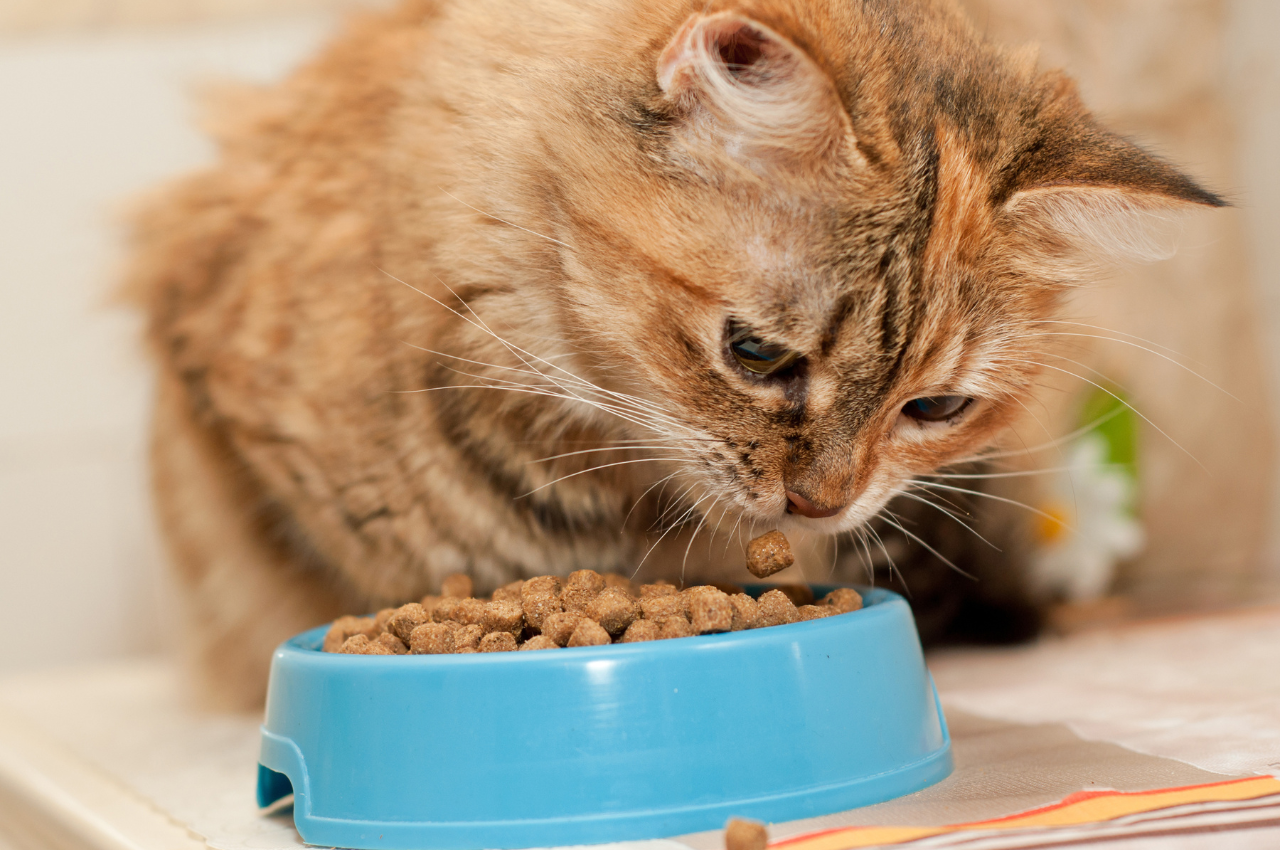An adult cat needs to eat around 2-3 ounces of wet food per pound of body weight per day. Ideally, you should determine the specific amount of food your cat needs based on their age, activity level, and overall health.
Feeding your cat the right amount of food is important for their health and well-being. Overfeeding can lead to obesity and other health issues, while underfeeding can cause malnutrition and weight loss. As a cat owner, it’s crucial to understand how much food your cat needs each day so that you can provide them with the necessary nutrients to thrive.
Factors such as age, activity level, and health should all be taken into consideration when determining your cat’s daily food intake. By feeding your cat the appropriate amount of food, you can ensure that they maintain a healthy weight and live a long, happy life.
Why Feeding Cats the Right Portion is Important
As a pet owner, you are responsible for taking care of your cat’s basic needs, including its diet. Feeding your cat the right portion is crucial in maintaining its health and well-being. Providing your cat with an appropriate quantity of food every day will help you avoid overfeeding or underfeeding. Overfeeding leads to obesity and other health problems while underfeeding results in malnourishment and other complications.

Here, we will discuss why it’s essential to pay attention to your cat’s dietary requirements, their nutritional needs, the impact of overfeeding, and the dangers of underfeeding.
Cats’ Nutritional Needs
Cats are carnivorous and require a high-protein diet. Their diet should consist of 25-30% protein, 9-10% fat, and 2.5% plant-based nutrients. They also need specific vitamins, minerals, and fatty acids such as taurine, arginine, calcium, and arachidonic acid. Feeding cats a balanced diet that meets their nutritional needs is essential for their overall health and well-being.
Impact of Overfeeding
Overfeeding your cat can lead to obesity, which can cause other health complications such as heart disease, diabetes, and joint problems. Obesity also reduces your cat’s lifespan. cats that are overfed are at risk of developing bladder problems, constipation, and arthritis. Thus, it’s essential to be mindful of the portion sizes and the number of times you feed your cat each day.
The Dangers of Underfeeding
Underfeeding your cat can lead to malnourishment, which can cause health complications such as muscle loss, organ failure, and a weakened immune system. Cats that are underfed are more susceptible to infections and diseases. It’s crucial to provide your cat with the right quantity of food to ensure that they receive the required nutrients for optimum growth and health.
It’s important to seek advice from your veterinarian on how much to feed your cat based on their age, weight, and activity level. Providing your cat with a balanced diet and appropriate portion size will help them maintain a healthy weight, improve their quality of life, and increase their lifespan.
It is also important to monitor how much your cat eats and avoid giving them snacks or human food that can result in overfeeding. Additionally, ensure that you store your cat’s food correctly and discard any expired or old food to prevent contamination.
Factors that Determine How Much to Feed A Cat
Determining the right amount of food to give a cat depends on several factors such as age, weight, activity level, and health condition. Consulting with a veterinarian can help in creating a suitable feeding plan that promotes optimal health and well-being for your feline companion.
As a cat owner, ensuring that your feline friend is well-fed is crucial to their overall health and well-being. However, determining how much to feed your cat can be a daunting task as it depends on various factors such as age, weight, body condition, and activity level. In this article, we will discuss these factors and provide you with useful information to help you determine how much to feed your cat. Age of the Cat The age of your cat is an essential factor to consider when deciding how much to feed them. Kittens, for example, require more calories than adult cats as they need the energy to grow. According to the Association of American Feed Control Officials (AAFCO), kittens require about 2-3 times more calories per pound of body weight than adult cats.
Therefore, it is essential to provide them with high-quality food specifically formulated for kittens. On the other hand, senior cats have lower energy requirements as they tend to be less active. Older cats are susceptible to certain health issues such as diabetes, obesity, and kidney problems, so it is crucial to feed them a balanced diet that meets their unique nutritional needs. Weight and Body Condition The weight and body condition of your cat are significant factors that determine how much to feed them. An overweight cat will require fewer calories than a lean cat. Therefore, it is essential to monitor your cat’s weight and body condition regularly to ensure they maintain a healthy weight. A healthy weight for a cat is determined by their body condition score (BCS). BCS is a visual assessment of the amount of body fat your cat has. Ideally, your cat should have a BCS of 4-5 out of 9.
However, if your cat is overweight or underweight, consult your veterinarian for guidance on how to manage their weight and adjust their diet accordingly. Activity Level of the Cat The activity level of your cat is also an essential factor to consider when deciding how much to feed them. Active cats such as outdoor cats or cats that love to play may require more calories than sedentary cats that spend most of their time sleeping. It is essential to provide your cat with a balanced diet that meets their nutritional needs and supports their lifestyle. Consult your veterinarian for recommendations on the appropriate type and amount of food to feed your cat based on their activity level.
Different Types of Cat Food and Their Nutritional Value
Understanding how much to feed a cat is crucial for its health and well-being. Different types of cat food, such as wet, dry, and raw, have varying nutrient values. It is recommended to follow the feeding guidelines on the food package and consult with a veterinarian for personalized advice.
Cats are obligate carnivores, which means they derive nutrition from animal-based proteins. However, there are different types of cat food available in the market, each with its own set of benefits and drawbacks. It is important to understand the differences between these types of cat food and their nutritional value to ensure that your cat gets a well-balanced diet that meets its needs.
Dry Cat Food
Dry cat food, also known as kibble, is the most common type of cat food available in the market. It is convenient, easy to store, and has a longer shelf life than other types of cat food. However, not all dry cat foods are created equal. Some brands of dry cat food may contain high levels of carbohydrates, which could lead to obesity and other health issues in cats. Look for dry cat food that is high in protein, moderate in fat, and low in carbohydrates. Check the labels to make sure that the first ingredient listed is a high-quality animal protein source, such as chicken or fish.
Wet Cat Food
Wet cat food, also known as canned cat food, contains a higher percentage of water than dry cat food. This makes it an excellent choice for cats that do not drink enough water on their own. Wet cat food is also a good option for cats that have dental issues or are picky eaters. It comes in a variety of textures and flavors, which can help stimulate your cat’s appetite and make mealtime more enjoyable. When choosing wet cat food, look for options that are made with high-quality animal protein sources and do not contain any fillers or artificial preservatives. Avoid brands that include meat by-products or grain-based ingredients.
Raw Cat Food
Raw cat food, also known as a raw diet, is a controversial option for cat owners. Proponents of raw cat food believe that it is the most natural and healthiest option for cats, as it mimics the diet of their wild ancestors. Raw cat food typically consists of meat, organs, and bones. Some cat owners prefer to make their raw cat food, while others purchase pre-made raw food from a pet store.

However, raw cat food can be risky if not prepared properly. Raw meat and bones can contain harmful bacteria that can make your cat sick. If you choose to feed your cat raw food, make sure that it is balanced and prepared in a way that minimizes the risk of bacterial contamination. Overall, the best type of cat food for your cat depends on its individual needs and preferences. It is important to consult with your veterinarian to determine the best diet for your cat based on its age, health, and activity level.
How to Calculate the Number of Calories Your Cat Needs
Determining how much to feed a cat can be tricky, but calculating the number of calories your cat needs can help. Factors such as age, weight, and activity level all play a role in determining the appropriate calorie intake for your feline friend.
As a cat owner, one of the essential responsibilities is to ensure that your cat is getting the right amount of food and nutrition. Feeding your cat the right amount of calories will help to maintain their overall health and well-being. However, the question in every cat owner’s mind is how much to feed a cat. The simple answer is to calculate the number of calories your cat needs based on their age, weight, and activity level. Here are some ways to determine your cat’s calorie intake.
The Rule of Thumb Method
A commonly used method to determine the amount of food your cat needs is the “Rule of Thumb” method. This method suggests feeding your cat about 20-25 calories per pound of body weight per day. However, this method is not always accurate and may not work for all cats. Factors such as age, activity level, and health condition should be taken into account.
The Body Weight Formula
Another method to calculate the number of calories your cat needs is the Body Weight Formula. This formula takes into account your cat’s weight in kilograms, Resting Energy Requirements (RER), and the appropriate multiplier for their activity level. The formula for calculating your cat’s RER is: RER = 70 x (Cat’s weight in kg) ^ 0.75 The multiplier for activity level is: – Indoor cat: 1.2 – Outdoor cat: 1.4 – Active or pregnant cat: 1.6 The formula for an indoor 4kg cat would be: RER = 70 x (4kg) ^ 0.75 = 206 kcal/day To calculate the number of calories needed for an indoor 4kg cat with a multiplier of 1.2, the formula is: 206 kcal/day x 1.2 = 247 kcal/day.
Consulting A Veterinarian
Consulting a veterinarian is the most accurate way to determine your cat’s nutritional requirements. They will consider factors such as age, weight, activity level, and overall health condition to provide a specific calorie intake recommendation. The veterinarian may also suggest a certain type of diet based on your cat’s needs.
The Importance of Proper Feeding Schedule and Frequency
A proper feeding schedule and frequency are crucial for maintaining a cat’s health. Knowing how much to feed a cat is important to prevent obesity and other related health problems. It’s recommended to consult with a veterinarian to determine the best feeding plan for your cat’s individual needs.
Ensuring your cat’s health and happiness involves more than just feeding them. It’s essential to understand the importance of proper feeding schedule and frequency. Just like humans, cats require a balanced diet in the right amounts and frequency to maintain a healthy weight and avoid nutritional deficiencies.
Free Feeding vs. Scheduled Meals
One of the first decisions you’ll have to make when deciding how much to feed your cat is whether to use the free-feeding or scheduled meal method. With free feeding, you leave food out all day, and your cat can eat whenever they want. While this method may be convenient, it can lead to overeating, which can result in obesity or other health problems. Scheduled meals involve feeding your cat on a set schedule, usually twice a day. This provides better control over portions, calorie intake, and mealtime consistency. Plus, scheduled feedings can help with training and managing any food-related behavior issues.
The Right Frequency of Meals
The frequency of meals depends on your cat’s age, breed, and health condition. Most adult cats require two meals per day, one in the morning and one in the evening. Kittens, on the other hand, require more frequent meals, usually three to four times per day, to meet their high-energy needs. It’s crucial to establish a routine and stick to it as cats thrive on consistency. Avoid overfeeding or underfeeding your cat as this can lead to digestive problems, weight gain, or malnutrition.
Common Mistakes in Feeding Cats and How to Avoid Them
To avoid overfeeding, it is important to determine how much to feed a cat for their age, weight, and activity level. Feeding them too much or too little can lead to health issues, so it is crucial to follow the recommended guidelines and adjust accordingly.
Cats are famously independent pets, but when it comes to their nutrition, they rely entirely on their owners. As a responsible pet owner, it’s important to know how much to feed your cat, as well as avoid common mistakes that could have serious implications on your cat’s health.
Overfeeding
Overfeeding your cat can lead to several health problems, including obesity, diabetes, and joint issues. Generally, cats should consume around 200-300 calories a day, depending on their weight and activity level. To avoid overfeeding your cat, consider using a measuring cup to portion out their meals, rather than free-feeding. Additionally, opt for high-quality, protein-rich foods that will keep your cat satisfied for longer periods.
Underfeeding
Underfeeding your cat can also be just as harmful as overfeeding. It can lead to malnourishment and a weakened immune system, leaving your cat more susceptible to illnesses and infections. To avoid underfeeding your cat, ensure you are giving them enough food based on their individual needs. If you are unsure, consult with a veterinarian who can provide recommendations on the ideal feeding plan for your cat.
Inconsistent Feeding
Inconsistent feeding can be harmful to your cat’s digestion and overall health. Cats tend to thrive on routine, and inconsistent feeding could lead to gastrointestinal problems, weight fluctuations, and even behavioral issues. To avoid inconsistent feeding, establish a set feeding schedule and stick to it as closely as possible. This way, your cat will know when to expect their meals and won’t become anxious or stressed due to changes in their feeding routine.
Navigating Cat Feeding Uncertainty: What You Should Do
Feeding your cat the right amount can be tricky. If you’re unsure, start by following the guidelines on the cat food packaging. Monitor your cat’s weight and adjust accordingly. Consulting your veterinarian is always a good option if you’re still uncertain.
If you are still unsure about how much to feed your cat, there are some things you can do to help determine the appropriate portion size for your feline friend. Consulting with your veterinarian, keeping track of your cat’s weight and eating habits, and adjusting the amount of food you offer based on your cat’s individual needs are all important steps to take.
Consulting Your Veterinarian
One of the most effective ways to determine how much to feed your cat is to consult with your veterinarian. They can evaluate your cat’s overall health, body condition, and activity level to determine the appropriate amount of food to offer. Your veterinarian can also help you select a high-quality cat food that meets your cat’s nutritional needs.
Keeping Track of Your Cat’s Weight and Eating Habits
Another way to determine how much to feed your cat is to keep track of their weight and eating habits. You can monitor your cat’s weight by regularly weighing them on a scale or visiting your veterinarian for weigh-ins. Keeping track of your cat’s eating habits, such as how much they eat and when they eat, can help you determine if they are getting too much or too little food.
Adjusting the Amount of Food You Offer
Finally, it is important to adjust the amount of food you offer based on your cat’s individual needs. This may mean increasing or decreasing their portion size, or switching to a different type of cat food that better meets their nutritional needs. Always follow feeding guidelines on the cat food package, but remember that individual adjustment may be necessary.

Remember to always provide fresh, clean water for your cat, and to avoid overfeeding, which can lead to obesity and other health problems. By taking the time to determine the appropriate portion size for your cat and paying attention to their weight and eating habits, you can help ensure that your feline friend is happy, healthy, and well-nourished.
Conclusion
Feeding your cat is a crucial aspect of pet ownership. Understanding the appropriate amount to feed your cat is important for their overall health and well-being. Ultimately, the amount of food your cat requires will depend on various factors such as age, weight, activity level, and whether they are spayed or neutered.
It’s always best to consult with your veterinarian to determine the best feeding plan for your feline friend. Remember to provide your cat with fresh water and a balanced diet to ensure a happy and healthy life.
